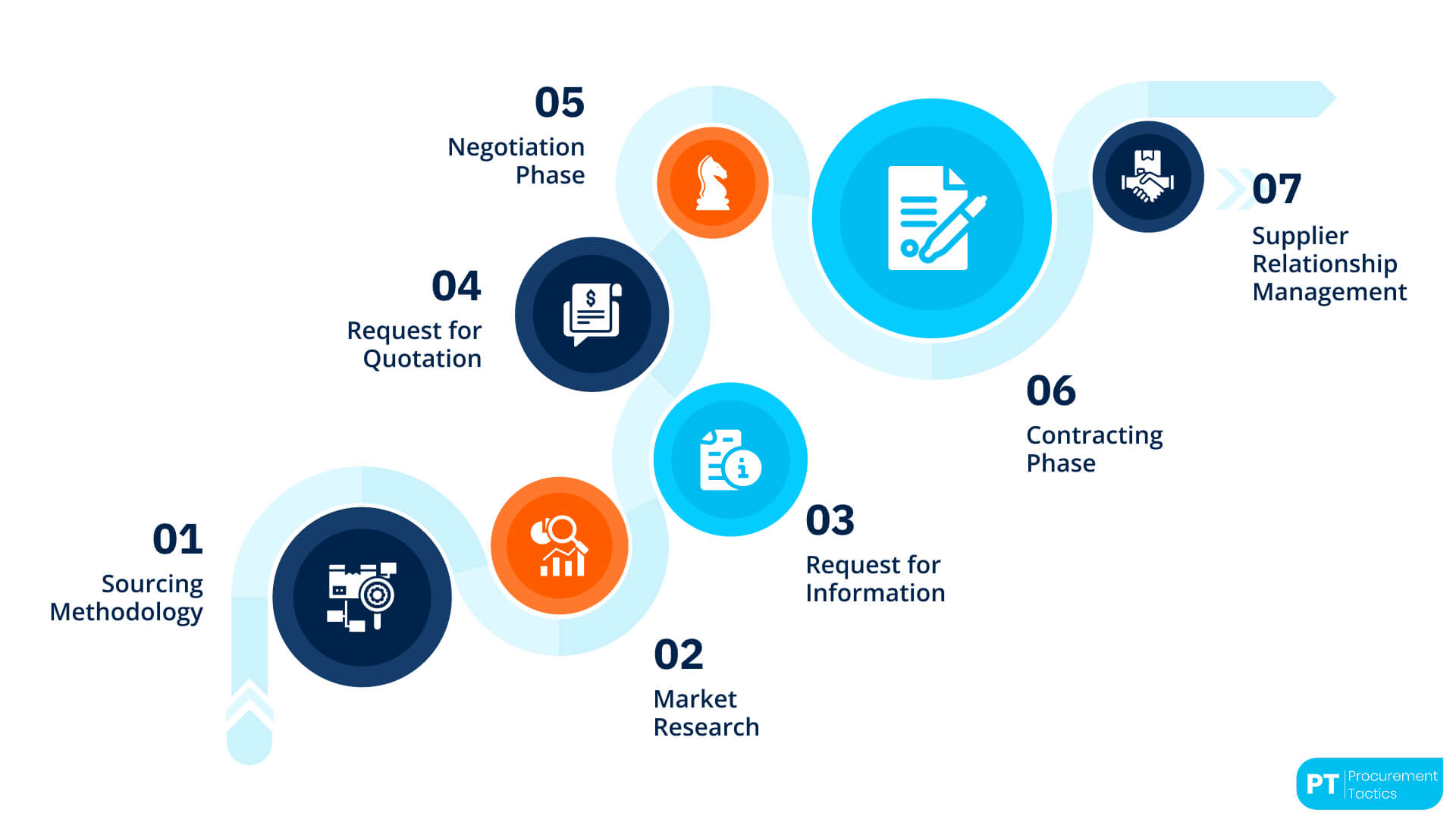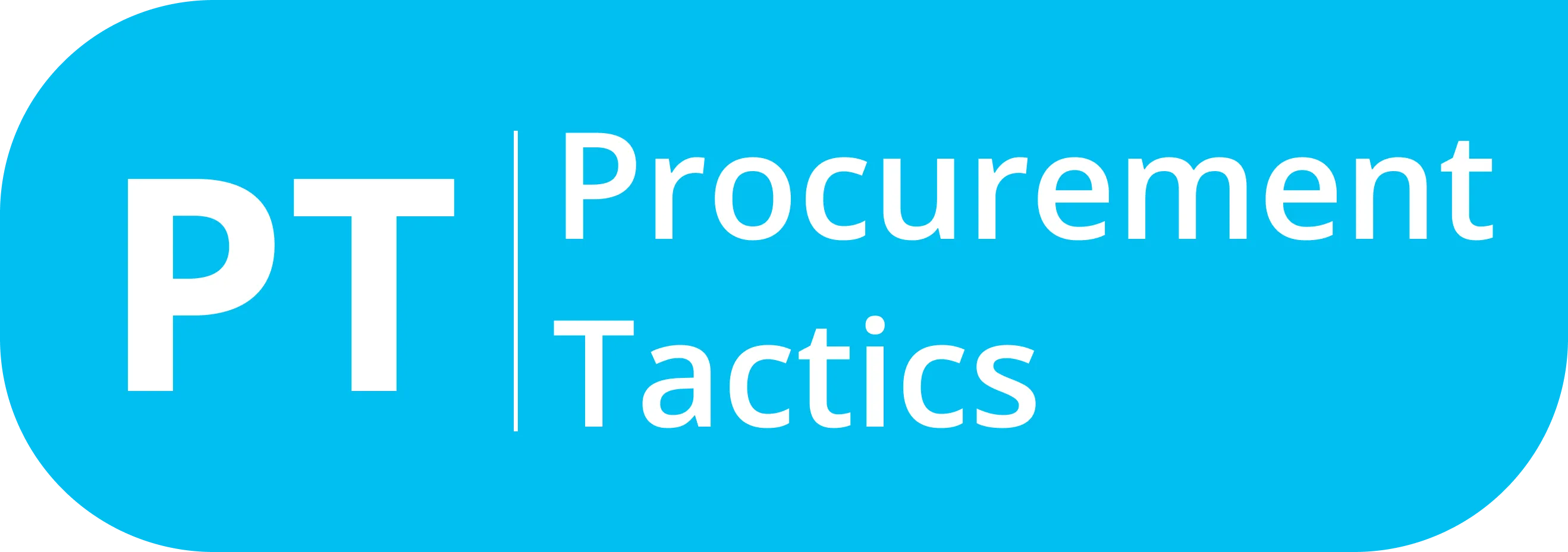Written by Marijn Overvest | Reviewed by Sjoerd Goedhart | Fact Checked by Ruud Emonds | Our editorial policy
Government Procurement — Definition And Process
What is government procurement?
- Government procurement refers to the procurement of goods and services by government agencies or authorities to support their daily operations or enhance their facilities.
- Government procurement plays a crucial role in supporting local infrastructure and businesses, boosting economic growth, and ensuring transparency.
- Government contracts fall into five major categories, each with its unique pricing and risk factors.
What is Government Procurement?
Government procurement refers to the process in which public or government agencies buy goods or services to support their daily operations or enhance their facilities.
Like most procurement processes, government procurement begins when a government branch or authorized individual identifies a need for materials or services. These resources are important to support the government’s daily responsibilities in managing a country or city.
A request for proposal (RFP) is issued once the government learns what it needs. It’s important to note that government procurement is typically strict, as it is regulated by strict rules and regulations to ensure taxpayer funds are used responsibly and efficiently.
Government Procurement Process

Step 1 – Sourcing Methodology
During the initial phase, you will identify your sourcing strategy by setting up your sourcing methodology and it should align with your organizational policy. However, determining the sourcing strategy requires more than just aligning it with the policy.
In this step, you will also need to conduct various analyses for you to be able to determine your sourcing strategy. These analyses include: analyzing the current purchasing situation, analysis of the internal process, financial analysis, contract analysis, market analysis, and portfolio analysis.
Step 2 – Market Research
The assignment to buy goods or services can come from companies, managers, or procurement managers themselves. More about that in step 3, but before a procurement manager starts procuring supplies, there must first be a need for the said supply.
Therefore, it’s the procurement manager’s responsibility to recognize the need for supplies and to develop market research for the said supply.
Market research will help the procurement manager come up with the exact number or amount of the needed supplies.
For example, an IT company has around 40 people coming in as new hires and there are only 20 computers for use.
The procurement manager’s market research must have data and research that will help him in making sure he knows everything needed for buying additional computers for the growing company.
Some of the questions that a procurement manager should ask during market research are the following:
- Does the company have a current supplier?
- Does the company have an alternate supplier in case the original supplier is gone?
- Does the company have an ample budget for procurement?
- Is there a shortage of the material that the company is trying to procure?
- If yes, will this affect our company’s budget allocation for the procurement?
- Is there an alternative if the supply needed is not available?
The market research should also cover sourcing for new available suppliers. Depending on whether the company is or not, sourcing specialists can help the procurement manager identify new sources of supplies.
Finally, the market research helps in identifying key information needed for the next steps. Information such as pricing per supply and brand quality is important and should be included in the research.
Step 3 – RFI (Request for Information)
The second step involves asking for information not just from suppliers, but from the heads of the department or branch that needs the supplies.
Before you create a purchasing order, you will need to come up with the exact number of supplies needed. Information such as the number of available supplies and the pricing per supply is some of the things you can ask when making the request.
When doing market research, you must ask the following questions:
- Which department or branch in the company needs the supplies?
- How many supplies are needed?
- How long should supplies last? A month? A year?
- Does the branch already have a reliable supplier?
- Is there an opportunity to look for new suppliers?
- How much budget is allocated for the said supply
Once the procurement manager has enough data, a purchase request is then sent to higher management for budget approval.
This is where company management will then decide how much budget is given to the procurement manager, based on data that was given by the initial market research.
The RFI can be considered a part of the process where you ask for more information from the branch managers, sourcing specialists, and others involved.
Step 4 – RFQ (Request for Quotation)
The request for quotation is part of the procurement process, where you ask suppliers for their initial pricing for the supplies needed. Usually done by letter, the procurement manager sends the request while the supplier responds by giving the initial price for the supplies.
For an idea of what to ask the supplier, here are some questions that one can ask:
- Does the supplier have a warehouse for the supplies?
- Where are the supplies located?
- For materials supplied outside of the country, how long will delivery take?
- For materials supplied locally, how long will delivery take?
- How much is the initial price per supply?
- Is there a shortage of the said supplies right now?
Once a reply from the RFQ or request for quotation is received from the supplier, the procurement manager should hold a meeting to discuss the quotes given.
A detailed analysis of each pricing is considered, while the initial market research will give the procurement manager an idea of how much each supply is priced at a market level.
The information from the market research, once again, is invaluable because it will give the procurement manager an edge when proceeding toward the next procurement process.
Step 5 – Negotiation Phase
Perhaps the most challenging yet exciting phase during the procurement process, the negotiation phase is where the procurement manager tries to get or procure the supplies at a reasonable price or amount.
Negotiations can also extend towards the procurement manager offering concessions to the supplier in the hopes of doing more business in the future.
During the negotiation phase, the negotiator should consider asking the following:
- Is there an ample amount of supplies for the order?
- Are there special discounts that the negotiator can take advantage of?
- Who is the contact person for the supplier and from the company?
The negotiation phase is also the event where the skills of a professional procurement manager may shine; once successful, this means he/she has proved his/her mettle as a master negotiator!
During the negotiation phase, always make sure to be ready with the information you gathered during the market research phase.
Step 6 – Contracting Phase
The contracting phase is where the procurement manager takes care of all contracts, invoices, receipts, and documents that were signed and are needed during, before, and after the entire procurement process.
During the contracting phase, there are only a few questions involved, but to make the process smooth, the procurement manager should check on the following:
- Were the supplies delivered in good condition?
- Were there any delays with the delivery?
- How can the supplier avoid delays in the future?
- Was payment settled with the supplier?
Most companies employ the use of procurement software to keep all important data and documents stored digitally. For more traditional companies, the procurement manager has to keep track of all receipts and must store them for future reference.
The contracting phase is also important because if there is a need to procure more supplies from the same supplier, all contracts, documents, and receipts can be used for market research once more.
Step 7 – Supplier Relationship Management
The final step is supplier relationship management. After completing all the previous steps, you now focus on assessing and establishing a robust relationship with your chosen supplier.
In this phase, active collaboration with your suppliers is essential to ensure they fulfill their commitments and deliver the agreed-upon goods or services.
Regular communication, performance evaluations, and feedback exchanges are part of this process, helping to address any concerns, identify areas for enhancement, and foster ongoing growth.
Moreover, supplier collaboration goes beyond the conventional buyer-supplier dynamic, emphasizing the creation of strong partnerships built on trust, transparency, and shared goals.
By nurturing these relationships, you can strengthen your supply chain and ensure successful long-term partnerships with your suppliers.
Government Procurement Example Process
Qbuzz is a public transport company in the Netherlands. In 2023, it needed to buy new electric buses to serve the Zuid-Holland Noord region. The goal was to reduce emissions and make public transport more environmentally friendly. Let’s look at how Qbuzz proceeded with this procurement using the 7 Steps Procurement Process:
Step 1 – Sourcing Methodology
Qbuzz began by identifying the need for cleaner, more sustainable transport. They assessed their current bus fleet, environmental goals, budget, and internal operations. This early planning ensured their procurement approach aligned with Dutch and EU climate policies. They chose a strategy that favored long-term value and sustainability—a key part of responsible public procurement.
Next, Qbuzz studied the electric bus market. They looked at available technologies, bus models, prices, suppliers, and total cost of ownership (including maintenance and energy use). They also checked delivery timelines and service options. This research helped them prepare clear and realistic expectations for the tender.
Step 2 – Market Research
Next, Qbuzz studied the electric bus market. They looked at available technologies, bus models, prices, suppliers, and total cost of ownership (including maintenance and energy use). They also checked delivery timelines and service options. This research helped them prepare clear and realistic expectations for the tender.
Step 3 – Request for Information (RFI)
Before launching the actual tender, Qbuzz reached out to potential suppliers for more detailed information — a common RFI step. This helped them refine their technical and functional requirements. It also ensured the procurement plan reflected the market’s capabilities and what departments actually needed on the ground.
Step 4 – Request for Quotation (RFQ)
After collecting enough input, Qbuzz issued a formal tender through TenderNed, the Dutch government’s e-procurement platform. In this RFQ phase, suppliers like IVECO BUS submitted detailed offers including bus specifications, prices, delivery schedules, and service plans. This allowed Qbuzz to compare all bids fairly.
Step 5 – Negotiation Phase
With offers in hand, Qbuzz entered into discussions with shortlisted suppliers. They clarified technical details, negotiated pricing, and checked that the supplier could meet both service and delivery expectations. The goal was to get the best combination of cost, quality, and long-term value.
Step 6 – Contracting Phase
Qbuzz awarded the contract to IVECO BUS, selecting them based on the best overall offer. They signed a detailed contract covering the delivery of 140 buses, warranties, penalties for delays, and maintenance terms. All contract documents were stored and managed via TenderNed for transparency and compliance.
Step 7 – Supplier Relationship Management
After the buses were delivered, Qbuzz continued to work closely with IVECO BUS. They held regular meetings, monitored performance, and resolved issues collaboratively. This ongoing relationship helps ensure long-term success, a key part of good procurement practice.
The Importance of Government Procurement
Government procurement is important because the services or goods bought are needed for the local government to work properly. Additionally, government procurement helps create jobs and new ideas, as companies compete to provide the best goods and services.
It supports local businesses and ensures that all purchases are safe and of good quality. Furthermore, government procurement not only sustains the delivery of essential goods and services but also boosts economic growth and gains public confidence.
Government Procurement vs Public Procurement
If one were to analyze the process, public procurement and government procurements are just the same. Or rather, government agencies use public procurement to give other shareholders a decent chance to fulfill orders asked by the government or a local department or authority.
One good reason why government procurement is styled in a public manner is to avoid corruption in government ranks. It is very easy for government officials to influence the outcome of any procurement process in their favor.
Thus, you hear stories of relatives and friends of public officials getting high-valued procurement contracts for big government projects, such as infrastructure projects.
The Five Major Categories of Government Contracting
Once a supplier returns the RFP, provided the answers they submitted satisfy the procurement manager, they’ll receive a request to attend the bidding.
The bidding is done to determine which supplier is able to finish the project requested and is also able to satisfy the demands placed in the RFP.
When a supplier wins the bidding, a contract is then formed between the winning supplier and the procurement manager. For business transactions, the contract is often simple; the demands are placed and both the supplier and the sourcing team should follow everything that is placed in the contract.
But for government procurement, it’s a whole different process. Government contracting is often divided into five major categories:
1. Fixed Priced Contracts
This is a contract where the pricing of the supplies will not change. However, there are also times when the ceiling or target price are both used. Fixed-price contracts often put the risk on the contract, since government contracts are not based on the amount of time or resources spent.
2. Cost-Reimbursement Contracts
For cost-reimbursement contracts, the arrangement places more risk on the government agency. These government contracts are more likely used for research and development services rather than for actual goods.
3. Time and Materials Contracts
For these contracts, the government establishes a per-hour labor rate, assesses materials costs, and establishes a price ceiling. If you can provide the services within the budget, this is a fantastic option.
Contracts for emergency services, for example, are frequently quite short-term. The contractor will only deliver labor and not materials in some situations, known as labor-hour contracts.
4. Incentive Contracts
Incentive contracts are based on either a cost-reimbursement contract or a fixed-price contract with added incentives. These will be used to create an incentive contract.
Governments are actually concerned with suppliers or contractors who can easily complete a project in a limited amount of time.
Because government projects require speedy completion, contracts are often awarded to those who are known to complete a project as fast as they can.
5. Indefinite Delivery and Quantity Contracts
A government agency may not always know exactly what they require. For example, they may not be aware of the exact quantities of material they require or the length of time they require a contractor to offer a service.
These are the most adaptable government contracts. They’re given out when the government isn’t sure how much of an item or service they’ll need or when they’ll need it. They’re also known as Task Order Contracts or Delivery Order Contracts.
Conclusion
Government procurement is how local governments get things they really need to work properly. This process helps them operate and create projects like building roads and buildings.
The importance of government procurement lies in its role to support and make the lives of everyone in society better. Thus, by having fair and transparent government procurement standards or laws in place, the public can ensure that all their taxes are utilized properly.
Frequentlyasked questions
What is government procurement?
Government procurement is a procurement process where local authorities procure goods/services to improve government facilities.
Why is government procurement important?
Some of the services/products are needed for the local government to function properly.
How does government procurement work?
It starts with a request for proposals, suppliers bid, and if selected, contracts are formed. The process involves market research, negotiation, and various contract types, like fixed-price or time and materials.
About the author
My name is Marijn Overvest, I’m the founder of Procurement Tactics. I have a deep passion for procurement, and I’ve upskilled over 200 procurement teams from all over the world. When I’m not working, I love running and cycling.






